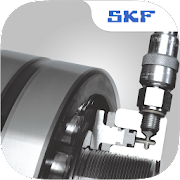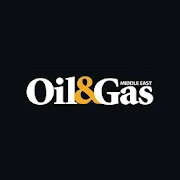Business
Why Safety Clothing And Equipment Is Mandatory For The Oil & Gas Industry?
We all know how hard manual labor is but labor in the oil and gas industry is even harder. A lot of aspects are involved that prove that the oil and gas industry is one of the most difficult to work in.
It is important that the workers are aware of the hazards they work in. With effective Protective fabrics, hazards and injuries can be avoided and minimized.
Hundreds and thousands of workers are killed every year in the gas and oil industry while on duty. Workers in the gas and oil industry are exposed to numerous amounts of hazards in their everyday duty. The chemicals used in the gas and oil industry are highly corrosive and if they come in contact with the workers’ skin, it can leave serious skin and tissue damage. Chemicals are not the only danger as workers often work with heavy machines that are powered by high voltage wire and if these wires are naked or damaged from any place, the workers can be in serious danger. In order to be safe from these harmful hazards industry owners must provide the workers with clothing made from Protective fabrics. These fabrics are specially created for the purpose of protecting the person wearing it and these clothing may contain an overall and other accessories such as eye protection and gloves.
Oil & gas industry has gas wells that contain hydrogen sulfide gas and dust of crystalline silica that is very bad for the lungs and if inhaled it can cause damage to the lungs and problems like silicosis with can be fatal in some cases. Apart from fumes and chemicals there are other hazards that can occur because in the oil and gas industry holes are dug into the ground to extract gas and oils and in doing this a flash fire can occur that reaches high temperatures up to 1000 degree Celsius and can last for a number of seconds in this period of time workers are exposed to high heat and flames which can burn and harm the workers within milliseconds, that is why works wear Protective fabrics.
Protective apparel has become a mandatory requirement for employees in nearly all industries, and each workplace has its own safety standards designating the sort and amount of auspice that FR habiliments should provide. Whatever FR habiliments you purchase must meet your industry certifications as well as the local safety standards set in the nation where the job is being performed.
It is essential to understand the sort of hazards that may put the worker’s life and wellbeing at risk in your workplace. This could be done by hiring professionals who perform a detailed examination of your facility and who could consider the risk involving factors, the extent of the damage expected in a sudden burst of flash fire, electric arc, molten metal splash or other workplace hazards, and the degree of bulwark required.
The climate in your workplace acts as one of the most critical variables to consider when purchasing protective clothing. A range of workplace hazards with varying intensities and exposure concentrations always place employees in hazardous situations. Whether you’re working in cold or sultry weather conditions determines, to some extent, as to what sort of protective clothing you choose for your staff. To achieve optimum coalescence of bulwark and comfort, the risk of heat stress or frost harm obviously needs proper evaluation by experts. Make sure you predefine your workplace climate before you go for any FR workwear.
Types of hazards
There are a number of dangers that lurk in the oil and gas industry. Some of these hazards are listed down below:
Chemical Hazards
Often chemicals are used in industries for a number of reasons. These chemicals are very likely corrosive. While handling these chemicals the worker must wear goggles, overalls, mask, gloves, and boots to be safe from the harmful chemicals.
Hot metal Hazards
While grinding and digging the machines often get too high temperatures and these hot machines can easily burn the people using them, to help workers work with machines easily they should wear gloves and heat resistant overalls.
Loud machines
The machines when drilling can be extremely loud and these noises can be very ear damaging, to stop the ear damaging the workers must wear earmuffs.
Sharp rocks and metals –
Sharp objects are everywhere in these environments and to be safe from them workers can wear hard boots and gloves as protection.
Things to consider while buying safety clothing
The climate in your workplace acts as one of the most critical variables to consider when purchasing protective clothing. A range of workplace hazards with varying intensities and exposure concentrations always place employees in hazardous situations. Weather conditions, cold or sultry hot, determine the type of workwear you need for your employees. Finding the right balance between comfort and safety is the key to maintaining the highest level of protection for your staff without causing a health concern. You need to hire specialist consultants to run climate assessments of your workplace premises before deciding the type of workwear and FR fabric you need for your employees.
Every industrial plant has some common risks and some hazards peculiar to that plant. To understand the risks present in your industrial plant you should get the plant assessed for risks related to the machinery and equipment installed. This assessment will help you choose the right fabric and FR workwear that works best for your plant and workforce.
The protective clothing you buy should be tested and approved before buying and should be up to industry standards as even one minor flaw can result in a big disaster that might risk someone’s life and may potentially affect the whole industry in the long run.
Oil and gas industry has one of the riskiest work environments all over the world. For better safety and greater protection of the life and limb of the employees, the employers need to understand the risks involved, the climate and plant functionality to choose the right FR workwear for their team. After all, work safety is the basic right of industrial workers.





